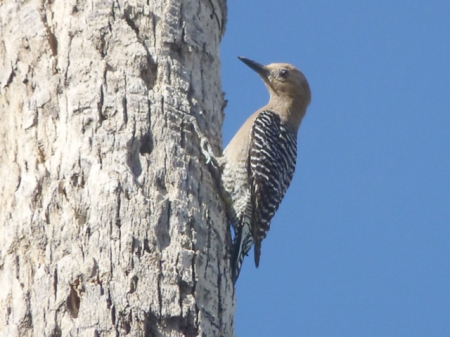Someday, in your travels, you might spot a small round hole in the dirt, about the size of a drinking straw.
And even better, surrounding the hole, there might be a downward pointing cone of dirt or sand, maybe several inches across, leading down into the hole.
If you see both of these, you may have found the dwelling of an Ant Lion, or as it is sometimes spelled, Antlion!

(The cones in this image are about 2 inches across)
Given the size of the hole, you may suspect this creature is not really a lion, and you would be right.
But it is not an ant either! To the regret of nearby ants.
In fact, to an ant, it must seem as fierce and deadly as a lion! Because the whole point of the hole in the ground and the slippery-slope funnel-cone leading down to it is to trap ants, which will then be grabbed by the horrific looking jaws of the Ant Lion, injected with venom and enzymes, and sucked completely dry of life!
Yiiiiikes!

Crazy-ferocious Ant Lion, photo courtesy of Phil Meyers
It sounds like something from a horror movie! So much so, in fact, that the Ant Lion was used as a model for a sand-dwelling monster in the movie Dune!
Like many other insects, Ant Lions go through several surprising life stages. As adults, Ant Lions look like frail dragonflies, who fly around for a few days, then lay eggs and die.
The eggs eventually hatch and grow into larvae, what we usually think of as worms or grubs. Ant Lion grubs are certainly remarkable looking, with those immense jaws, sticking out front like lobster claws. Their bodies, generally an inch long or less, are covered with dark hairs and bristles, adding a wild and wooly look to their ferocity.
And here’s another clue—near the sand-funnel with the hole at the bottom, you may notice a meandering trail in the dirt, like a little ditch. And this wandering line, which looks something like a doodle you might draw on paper, gives the Ant Lion its other name—the Doodlebug!
But why do they do the doodling they do?
Well, look at the size of their jaws! Because their jaws are so enormous compared to their body size, they have to walk around backwards! You would probably meander too, if you had to walk around backwards all the time.
Ant Lions are so clever that they are found all over the world, so you can look for them even if you are not in the desert. And, given how many kinds there are, when being formal, we will not be specific, but just call them by their family name, Myrmeleontidae.
So watch for, and warn any ants, if you see the signs of these remarkable predators!









You must be logged in to post a comment.